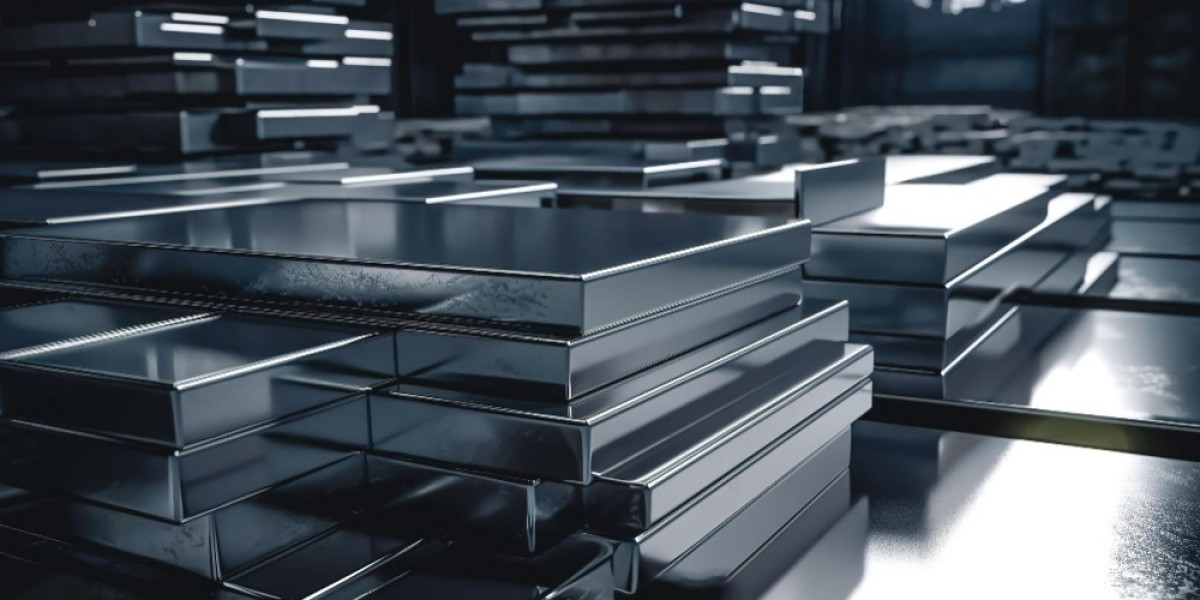Introduction to Metal Futures
Metal futures are financial contracts that obligate the buyer to purchase a specific quantity of metal at a predetermined price on a future delivery date. These contracts are traded on commodity exchanges and play a crucial role in risk management for industries reliant on metals, such as manufacturing, construction, and energy. Predicting commodity market trends, especially metal futures prices, is essential for investors, traders, and businesses to make informed decisions and mitigate risks effectively.
Understanding Commodity Market Trends
Commodity market trends encompass a wide range of factors that influence the prices of various commodities, including metals. These trends are shaped by global economic conditions, geopolitical events, supply and demand dynamics, technological advancements, and investor sentiment. Analyzing these trends is vital for predicting metal futures prices accurately.
Factors Influencing Metal Futures Prices
Supply and Demand Dynamics
The fundamental principle of supply and demand heavily influences metal futures prices. Factors such as production levels, inventory levels, and consumption patterns determine the equilibrium price of metals in the market. Any imbalance between supply and demand can lead to price fluctuations in metal futures contracts.
Economic Indicators
Economic indicators, such as gross domestic product (GDP), inflation rates, interest rates, and industrial production data, have a significant impact on metal prices. For example, strong economic growth typically increases demand for metals, driving prices higher, while economic downturns may lead to decreased demand and lower prices.
Geopolitical Events
Geopolitical events, such as wars, trade disputes, and sanctions, can disrupt the supply chain and affect metal prices. Political instability in major metal-producing regions or tensions between countries can create uncertainty in the market, leading to price volatility in metal futures contracts.
Technological Advancements
Advancements in technology, such as automation, renewable energy, and electric vehicles, can influence the demand for specific metals. For instance, the increasing adoption of electric vehicles has led to higher demand for metals like lithium, cobalt, and nickel, impacting their futures prices.
Methods of Predicting Metal Futures Prices
Fundamental Analysis in Detail
Fundamental analysis involves evaluating the underlying factors that determine the intrinsic value of a commodity. This includes analyzing macroeconomic indicators, industry-specific factors, and company-specific data to forecast future price movements accurately.
Macroeconomic Factors
Macroeconomic factors, such as GDP growth, inflation rates, and monetary policies, provide insights into the overall health of the economy and its impact on metal demand. For example, robust economic growth usually translates to higher demand for metals in construction, infrastructure, and manufacturing sectors.
Industry Analysis
Analyzing industry-specific trends and developments can help predict future demand for metals. Factors such as technological advancements, regulatory changes, and market trends within specific industries influence metal prices and futures contracts.
Company-Specific Factors
Examining the financial health, operational efficiency, and strategic initiatives of metal-producing companies can provide valuable insights into future supply dynamics and price trends. Factors such as production costs, exploration activities, and capital expenditures impact the profitability and competitiveness of metal producers.
Technical Analysis Explained
Technical analysis entails examining historical market data, predominantly focusing on price and volume, with the aim of discerning patterns and trends that may aid in forecasting future price fluctuations. Common technical analysis tools include price charts, trend lines, moving averages, and oscillators.
Price Charts
Price charts visually represent the historical price movements of metals over time, allowing analysts to identify patterns and trends. Common types of price charts include line charts, bar charts, and candlestick charts, each providing different insights into market behavior.
Trend Lines
Trend lines are used to identify the direction and strength of price trends in metal futures contracts. An uptrend is characterized by higher highs and higher lows, indicating bullish market sentiment, while a downtrend is marked by lower highs and lower lows, signaling bearish sentiment.
Moving Averages
Moving averages smooth out price data by calculating the average price over a specific period, such as 50 days or 200 days. Analysts use moving averages to identify trend reversals, support and resistance levels, and potential entry or exit points for trades.
Oscillators
Oscillators, such as the relative strength index (RSI) and stochastic oscillator, measure the momentum and overbought or oversold conditions in the market. These indicators help traders identify potential reversal points or divergence between price and momentum, signaling a change in trend direction.
Sentiment Analysis and Its Role
Sentiment analysis involves evaluating the collective sentiment of market participants, including investors, traders, and analysts, to gauge their expectations and emotions regarding metal prices. This can be done through various indicators, social media analysis, and news sentiment.
Market Sentiment Indicators
Market sentiment indicators, such as the put/call ratio, volatility index (VIX), and commitment of traders (COT) report, provide insights into investor sentiment and positioning in the market. Contrarian investors often use these indicators to identify potential market reversals based on extreme sentiment levels.
Social Media Analysis
Analyzing social media platforms, forums, and online communities can provide real-time insights into market sentiment and investor behavior. Sentiment analysis tools use natural language processing algorithms to extract sentiment from social media posts, tweets, and news articles related to metal markets.
News Sentiment
Monitoring news headlines, press releases, and economic reports can help traders anticipate market-moving events and sentiment shifts. Positive news, such as strong economic data or supply disruptions, can boost metal prices, while negative news may lead to price declines in futures contracts.
Utilizing Machine Learning Algorithms
Machine learning algorithms offer advanced predictive analytics capabilities by analyzing large datasets and identifying complex patterns and relationships. In the context of predicting metal futures prices, machine learning models can incorporate various data sources and variables to generate accurate forecasts.
Data Collection
Collecting relevant data sources, such as historical price data, economic indicators, news articles, and social media feeds, is crucial for training machine learning models. Clean, comprehensive datasets ensure that the models can capture the underlying patterns and trends in metal markets effectively.
Model Training
Training machine learning models involves feeding historical data into algorithms and optimizing their parameters to minimize prediction errors. Techniques such as supervised learning, unsupervised learning, and reinforcement learning can be applied to train models on past price movements and market conditions.
Predictive Analytics
Once trained, machine learning models can generate predictive analytics and forecasts for future metal prices based on incoming data inputs. These forecasts provide traders and investors with valuable insights into potential price trends, volatility levels, and risk exposure in metal futures contracts.
Challenges in Predicting Metal Futures Prices
Despite advances in predictive analytics and machine learning, predicting metal futures prices remains challenging due to several factors:
Volatility: Metal markets are inherently volatile, with prices subject to rapid fluctuations driven by supply and demand imbalances, geopolitical events, and market sentiment shifts.
Market Noise: Noise in the market, such as random price movements and false signals, can distort predictive models and lead to inaccurate forecasts.
Black Swan Events: Unforeseen events, such as natural disasters, political crises, or pandemics, can disrupt global supply chains and cause significant disruptions in metal markets.
Conclusion
Predicting metal futures prices requires a comprehensive understanding of the factors influencing commodity market trends and the application of advanced analytical techniques. By leveraging fundamental analysis, technical analysis, sentiment analysis, and machine learning algorithms, investors and traders can make informed decisions and navigate the dynamic landscape of metal markets effectively.
FAQs
1.How do economic indicators impact metal futures prices?
Economic indicators impact metal futures prices by reflecting changes in demand and supply dynamics. Strong economic growth typically boosts demand for metals, driving prices up. Conversely, economic downturns or recessions often lead to decreased demand, causing prices to decline.
2.What role does sentiment analysis play in predicting metal prices?
Sentiment analysis aids in predicting metal prices by assessing market sentiment through factors like social media, news, and investor sentiment surveys. Positive sentiment often correlates with upward price movements, while negative sentiment can lead to price declines. Analyzing sentiment allows traders to anticipate market trends and make informed decisions regarding metal investments.
3.Can machine learning algorithms accurately forecast metal futures prices?
Machine learning algorithms can provide accurate forecasts of metal futures prices by analyzing vast datasets and identifying patterns. However, the accuracy of these forecasts depends on the quality of the data, the complexity of the market dynamics, and the effectiveness of the chosen algorithm.
4.What are the major challenges in predicting metal market trends?
The major challenges in predicting metal market trends include volatility caused by supply-demand imbalances and external factors like geopolitical events, as well as the presence of market noise, which can distort predictive models and hinder accurate forecasts.
To Get Real-Time Price of Metal Visit: https://pricevision.ai
Source: https://bresdel.com/blogs/475199/Metal-Futures-Prices-How-to-Predict-Commodity-Market-Trends








